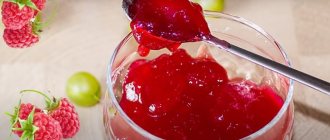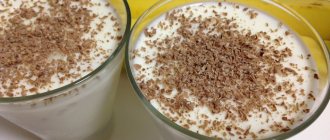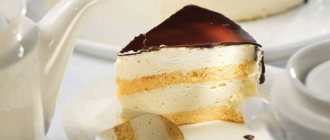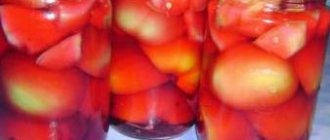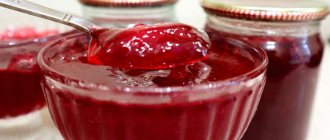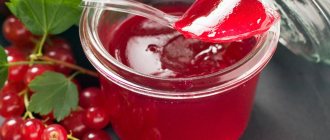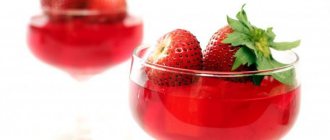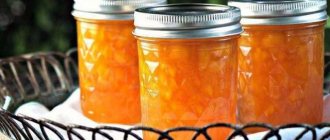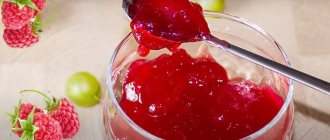Agar-agar - what is it?
Agar-agar is a mixture of plant origin, which includes polysaccharides agarose and agaropectin. This substance can replace the gelatin that everyone is used to. And the question immediately arises: “What is agar-agar made from, if it can be eaten?” An extract is extracted from red and brown algae that live on underwater rocks in the Pacific Ocean, Black and White Seas. This essence after processing is agar-agar. The substance consists of 80% polysaccharides, 4% is mineral salts, and 16% is water. The mixture does not contain fats and is enriched with minerals: iodine, iron, calcium and magnesium.
Useful properties and contraindications
The benefits of this natural product are great - since ancient times it has been valued all over the world for good reason. A gelling additive is not just a binding component, but a truly unique substance with the following properties:
- Supports the vital activity of bacteria necessary for the proper functioning of the gastrointestinal tract;
- Eliminates low acidity;
- Has a mild laxative effect;
- Promotes wound healing;
- Relieves pain from bruises;
- Improves the condition of skin and hair;
- Normalizes glucose levels;
- Reduces cholesterol levels;
- Removes salts of heavy metals;
- Removes unnecessary waste and toxins;
- Causes a feeling of fullness and promotes weight loss.
We also recommend: Symptoms of coronavirus
Are there any contraindications? Unfortunately, you can't do without them. Experts recommend taking the supplement with caution or completely abandoning the supplement in the following cases:
- Pregnant and lactating women;
- Children under six years of age.
Do not overuse - excessive amounts of the additive can lead to negative consequences, including:
- Weakening of the intestines and diarrhea;
- Disturbance of intestinal microflora.
The recommended daily intake is 4 grams - you should not step over this limit. If you have any questions, consult a specialist.
Have you decided to purchase a component for preparing baked goods or other dishes?
What is agar-agar in cooking and what can you replace it with?
An algae extract diluted in water forms a dense, gelatinous substance. This mixture is used both in microbiology and in medicine and cooking. Agar-agar is used to prepare a variety of desserts with jelly elements. This substance is often added to industrially produced confectionery products. Interesting fact: agar-agar is listed in the food composition as E406 - a food additive.
The vegetable mixture can easily be replaced with gelatin in home cooking. Unlike its substitute, agar-agar has no taste, color or smell. These characteristics do not change the original taste of the main components of the dish.
How is it different from gelatin?
Not all novice cooks know the difference between agar-agar and gelatin - both components have the same properties. They bind the ingredients and help make a jelly product. But there is a difference, it is significant!
- Gelatin is a high-calorie product made from the bones, cartilage and skins of cattle;
- Gelatin has fewer beneficial qualities and takes a long time to cook;
- Agar can be heated, and then cooled and heated again - without losing its properties;
- Gelatin is not suitable for preparing sweet dishes and desserts;
- Agar-agar is of plant origin, while its alternative is animal;
- Agar-agar does not have a specific taste or smell, but is different from gelatin.
We also recommend: What is the difference between margarine and butter?
The herbal component definitely wins this fight - it perfectly complements any dish and has virtually no contraindications. By the way, it is available for vegetarians!
Do you know what to make from agar-agar? The list of dishes is quite wide - try to become a real pastry chef, because the additive allows you to do this!
Agar-agar or gelatin: which is better?
If we compare agar-agar and gelatin, the first candidate will clearly take the lead, since it forms a jelly substance that is much denser at the same volume. Simply put, 1 teaspoon of algae extract is equivalent to 4 identical measures of collagen denaturation product.
Also obvious advantages of agar-agar are:
- 100% plant origin, which is ideal for vegetarians;
- low calorie content and no fat;
- improves contraction of the intestinal walls, so the satiety effect will last longer;
- economical: agar-agar is needed 4 times less than gelatin;
- removes cholesterol and toxins from the body;
- the pour point is lower than that of the “competitor”;
- safety for diabetics;
- does not form lumps when dissolved in water;
- allowed for use on fasting days.
Use in cooking
Before you figure out why agar-agar is needed in cooking, you need to learn how to dilute it correctly! The additive is used only in dissolved form - the powder concentrate cannot be used in its pure form. There are general rules that should be followed - the component can be dissolved in several liquids.
- In water. Place a teaspoon of the product in a glass of cold drinking water and leave for 20-30 minutes. Then boil the mixture, stirring constantly and cook for 5-7 minutes until the lumps disappear, you can add sugar and spices. Cool and refrigerate to thicken;
- In tea or juice. It is worth heating the drink to 60-70 degrees, and then adding a teaspoon of powder. Stir until completely dissolved and refrigerate until hardened.
So, what is agar-agar in cooking? It is a stabilizing and gelling agent. It is used in the preparation of the following dishes:
- Soups and broths;
- Sauces;
- Puddings;
- Marmalade and jellies;
- Marshmallows and mousses.
We also recommend: Is it possible to fry in butter?
Now you understand what can be made from agar-agar - the component is actively used both in the home kitchen and in the restaurant business. By the way, sometimes the product is used in its pure form for oral administration – in folk medicine. With agar-agar you can make useful masks for the face and hair.
Bird's milk with agar-agar
Ingredients:
- 70 ml heavy cream;
- 4 tsp agar;
- 390 g granulated sugar;
- 10 g vanillin;
- 3 egg whites;
- 3 tbsp. cocoa;
- ¼ liter of water;
- 160 g butter (butter);
- citric acid - on the tip of a knife.
Cooking steps:
- Add agar to the water and stir until it dissolves.
- Using a mixer, beat the butter. Add cream and continue whipping.
- Place the jelly substance on the fire. Before boiling, add sugar and stir. Boil the syrup to 108-110°C, stir occasionally until the mixture reaches the required temperature.
- Beat egg whites with vanilla. We start with the mixer at medium speed, gradually increase it and add citric acid.
- Without stopping whisking the protein substance, pour the syrup into it in a thin stream. Continue beating until thick and homogeneous.
- Add oil to the resulting mass and mix thoroughly.
- Line a suitable mold with cling film and pour the prepared mixture into it. Leave for 3 hours to harden.
- Cut the resulting soufflé into pieces; you can use cookie cutters.
- Sprinkle the blanks on all sides with cocoa.
How to use agar-agar
We have already discussed pectin and gelatin, and today we are moving on to the next gelling agent - agar-agar! Agar-agar is a gelling agent similar to gelatin, but much stronger and is made from plant ingredients - algae; Agar consists of agaropectin and agarose polysaccharides. This is a light yellow powder that can be of different shades, but the lighter it is, the higher the quality of agar-agar.
Agar-agar is thermoreversible, that is, a solution with it can be reheated and it will harden again after cooling.
Agar-agar completely dissolves in water at 90-100 degrees, and already at 40 degrees it begins to solidify, which is why, for example, it is necessary to quickly, quickly deposit the marshmallow mass (Elena Tsoi talks in great detail about the intricacies of working with agar-agar in the video tutorial Zephyr Blueberry -Lavender)
Agar-agar contains no fat and consists of 5% protein and 95% carbohydrates and is rich in minerals. It is highly valued in dietary nutrition - it is quickly eliminated from the body, not being a source of calories, and helps cleanse the body and strengthen it.
What you need to remember about working with agar-agar is that you need to add it at a low temperature, but then this mass must not only be brought to a boil but also boiled thoroughly!
It is also important to find a good agar-agar; many questions to our curators regarding the lesson with marshmallows concerned precisely this point. Most of the problems (although it would seem!) arise with the manufacturers Kotanyi and Dr. Oetker, but with S. Pudov there are no complaints!
How to choose agar-agar?
- First, pay attention to the composition - agar-agar should be at least in first place in it. — Carefully study the manufacturer’s recommendations on the packaging in what amount of mass he recommends dissolving his product, a good indicator is about 1.5 grams per 100 ml of liquid, the higher this indicator is, the more “diluted” the product is.
What agar do you use and what for?
Do you want to learn even more about pectins, gelatin, sugars and all the other basic things on which the art of confectionery is built? Find out their role in recipes, how they affect the texture of the dessert, and the possibilities of substitutions? Learn to cook 8 different desserts and always be confident in your results?
The Candy Bar Desserts online course with chef Elena Tsoi is simply necessary for a deep understanding of the chemistry of the processes that underlie most desserts! You will understand a huge layer of theory and the fundamentals of confectionery art in practice. Each dessert means new techniques and knowledge, separate theory lessons, support from curators and unlimited access to materials.
This course will give you an incredible boost in development and will take your professional knowledge and skills to a much higher level!
Marshmallow
Ingredients:
- 1 large egg white;
- 8 g agar;
- 350 g sugar (for syrup);
- 130 g sugar (in applesauce);
- 130 ml water;
- ½ kg apples.
Cooking plan:
- We wash the fruits generously with water, remove moisture with paper towels and place them on a baking sheet.
- Having set the oven to 220°C, bake the apples for 20 minutes (maybe less if the fruits are small).
- Let the baked fruits cool and, armed with a spoon, extract the pulp from them.
- Grind the resulting puree using a sieve.
- Place the apple mixture in a saucepan, put it on the fire and cook until thick.
- Season the puree with 130 g of granulated sugar and stir until dissolved. Let the mixture cool.
- Transfer the cool puree into a large container, add the egg whites and use a mixer to beat until thick.
- In a saucepan, combine water with agar, stir and, setting the heat on the stove to medium, bring to a boil. It is necessary to constantly stir the substance to avoid burning.
- When the mixture boils, after 5 minutes it will reach a temperature of 110°C. It is important to measure accurately with a cooking thermometer.
- Pour the hot syrup into the applesauce in a thin stream and continue whisking at the same time.
- Place the sweet mass into a pastry bag and select the “Star” nozzle.
- Squeeze the future marshmallows onto parchment paper in small portions.
- Set aside the dessert until it cools completely.
Jelly recipe
Ingredients:
- cherries (fresh or frozen) – 400 g;
- granulated sugar – 4 tbsp;
- agar-agar – 30 g;
- water – 700 ml.
Preparation:
- In a large saucepan, combine agar and hot water and mix.
- Add cherries and sugar.
- Place the saucepan on the fire, bring the substance to a boil, stirring regularly.
- Pour the mixture into bowls and leave for half an hour to cool.
